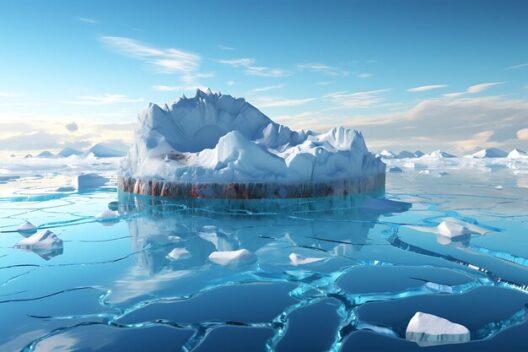Biodiversity is the tapestry of life that adorns our planet, encompassing the myriad forms of flora and fauna with intricate interdependencies that sustain ecosystems. However, the relentless advance of global warming is unraveling this tapestry, reshaping ecosystems and placing a plethora of species in jeopardy. The phenomena of climate change alter habitat dynamics, disrupt biological interactions, and accelerate extinction rates, prompting pressing concerns about the future of biodiversity.
As global temperatures rise, the impact on ecosystems is both profound and multifaceted. One primary consequence is the alteration of habitats. Terrestrial ecosystems such as forests, grasslands, and wetlands are becoming increasingly vulnerable to climate shifts. For instance, warmer temperatures can lead to a shift in vegetation zones, whereby species that once thrived in specific locales may find themselves ill-suited to their environments. This relocation phenomenon, known as species migration, forces distinct species to compete for dwindling resources, often to the detriment of those least able to adapt.
In aquatic ecosystems, the implications are equally concerning. Oceanic warming has resulted in deoxygenation and altered salinity levels,, which profoundly affects marine biodiversity. Coral reefs, often heralded as the “rainforests of the sea,” are experiencing unprecedented bleaching events due to higher sea temperatures. This phenomenon not only threatens the corals themselves but also the myriad species that rely on these vibrant ecosystems for survival.
Moreover, the interplay between climate change and biodiversity is exacerbated by phenological mismatches. These mismatches occur when the timing of biological events, such as blooming and breeding, becomes desynchronized due to climate fluctuations. For instance, migratory birds may arrive at breeding grounds only to find that the insects they depend upon for food are no longer abundant due to earlier flowering plants. Such disruptions ripple through food webs, endangering numerous species and diminishing ecosystem resilience.
The ramifications of biodiversity loss extend beyond ecological health; they resonate with human societies as well. Biodiversity underpins vital ecosystem services, including pollination, water purification, and carbon sequestration. A decline in species diversity can compromise the functionality of these services, precipitating adverse effects on agriculture, water supply, and overall community well-being. Disruptions to ecosystem services can lead to economic instability, food scarcity, and increased vulnerability to natural disasters.
Innovative conservation strategies are essential for countering the threats posed by climate change. One such strategy involves the establishment of protected areas, where ecosystems can flourish free from human-induced pressures. These areas provide sanctuaries for endangered species and help preserve critical habitats. Nevertheless, the effectiveness of protected areas is contingent upon their strategic placement and management, requiring comprehensive ecological knowledge and adaptive governance.
In tandem with protected areas, habitat restoration plays a crucial role in the conservation toolkit. Restoration initiatives aim to rehabilitate degraded ecosystems, fostering their recovery and enhancing biodiversity. This can include reforestation projects, wetland reclamation efforts, and the removal of invasive species. Such endeavors not only bolster biodiversity but also enhance climate resilience, as healthy ecosystems are better equipped to withstand the vicissitudes of climate change.
Furthermore, engaging local communities in conservation efforts is paramount. Indigenous knowledge systems, deeply rooted in place and tradition, provide invaluable insights into sustainable resource management. Collaborative approaches that empower local populations can lead to more effective conservation outcomes that align with the cultural and economic needs of communities. Conservation is often most successful when local stakeholders actively participate in the stewardship of their natural resources.
Technological innovations also offer promising avenues to mitigate biodiversity loss. Remote sensing, artificial intelligence, and conservation genomics are transforming how researchers monitor ecosystems and assess species health. These technologies enable real-time data collection and analysis, facilitating rapid responses to emerging threats and informing conservation strategies. Additionally, citizen science initiatives harness the power of the public to contribute to biodiversity monitoring, expanding the reach and capacity of conservation efforts.
However, despite the myriad approaches available, the urgency of the climate crisis cannot be overstated. Immediate action is crucial to mitigate the effects of global warming on biodiversity. This necessitates a concerted effort from governments, businesses, and individuals alike to transition towards sustainable practices. Reducing greenhouse gas emissions, promoting renewable energy, and adopting sustainable agricultural practices are integral components in addressing the root causes of climate change and preserving biodiversity.
The intersection of biodiversity and climate change presents a complex web of challenges, yet it also offers a profound opportunity for collective action. Understanding the intrinsic connections between ecosystems can galvanize efforts to protect our planet. As stewards of the Earth, we bear the responsibility to safeguard its biodiversity, ensuring that future generations inherit a world replete with natural wonder. The fight against climate change is intertwined with the fight for biodiversity; to neglect one is to jeopardize the other.
In conclusion, as our planet continues to warm, the delicate balance of biodiversity teeters on the brink. The reshaping of ecosystems instigated by climate change poses unprecedented threats to countless species and the services they provide. Through innovative conservation strategies, restoration initiatives, and collaborative efforts, it is still possible to safeguard the intricate network of life that sustains us. The commitment to preserving biodiversity must be integral to our response to climate change, for the resilience of our planet depends on it.








Quality cleaning fair prices, great value for money spent. Economical excellence achieved. Value champions.